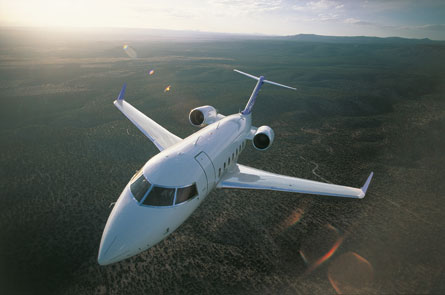For Canada's biggest aerospace company, the next few years will be - if not make or break - certainly decisive in whether it can continue to be a major force in commercial aviation. If its CSeries gamble pays off, Bombardier will by the middle of this decade be a third player in the lucrative narrowbody market, with the lion's share of the 110- to 130-seat segment.
If it does not, the airframer could end up seriously, if not irreparably, wounded financially. This would reverberate not just on Bombardier's shareholders, but the whole of Canada's aerospace, and even society at large.
Not since a burst of activity in the late 1990s has Bombardier had so many new programmes under development. Four of these - two new variants of its Global business jet family, a larger Learjet and a stretch of its CRJ regional jet - look safe bets, building as they do on established brands and customer bases.
The CSeries is a different proposition, however. Bombardier is risking $3-4 billion on its attempt to break into an entirely new segment of the market, and that is just on development. The company will then have to battle for share against not just Airbus and Boeing, but perhaps rivals from Embraer and China.
Every Canadian with an interest in aerospace knows the history of how a humble manufacturer of snowmobiles broke first into mass transit in the 1970s and then into aerospace in the 1980s, to become - through a series of acquisitions of largely failing businesses - third only to Airbus and Boeing in terms of aircraft manufacturing.
Canada's biggest aerospace employer by some margin, it has significant manufacturing operations in Wichita, Kansas; Belfast, Northern Ireland; and now Mexico.
Time after time, Bombardier has defied its doubters: revolutionising regional aviation with the CRJ, developed from the Canadair business jet; setting a trend in long-range business jets with the Global Express and its successors; turning around the struggling Wichita icon Learjet and transforming the UK's Shorts from failed aircraft builder to thriving aerostructures business.
The company even kept faith with regional turboprops after acquiring ailing Canadian manufacturer de Havilland, with the Q400 proving itself an economic alternative to regional jets in recent years.
It can be certainly be argued that, without the entrepreneurial vision of Laurent Beaudoin, who took over the company from his father-in-law in the early 1960s, Canada would not have an aerospace industry to speak of.
 |
|---|
©BombardierThe Canadair Challenger spawned the CRJ regional jet family and future Challengers |
As industrialists with a skill for spotting a bargain, building products profitably and recognising gaps in the market, the Beaudoins - first Laurent and then his son Pierre, who have led the company since the 1960s - have scarcely put a foot wrong.
Even the difficult decision to divest its original but non-core recreational products business after 9/11 to concentrate on aviation and railways proved wise, as both sectors rebounded strongly in the 2000s. However, notable sceptics such as Teal Group's Richard Aboulafia think Bombardier has over-reached with the CSeries.
"We know very little about non-recurring and recurring costs and even less about pricing, so we're a long way from accurate estimates of programme accounting," he says. "But if they can keep discounts to the usual 30-40% and the development bill to $3-4 billion, and learn to build it on a conventional building curve, they should be able to pay it off with 1,000 units over 20 years." However, that involves a lot of ifs. "At this point, I don't regard this outcome as particularly likely at all," he cautions. "Our baseline scenario is a loss-making programme. Our upside is a marginally profitable one. The downside is total carnage, resulting in a sale of the programme to China."
In Montreal, where Bombardier's factories, offices and completion centres are spread over a large area of the suburb of Dorval next to the city's international airport, the mood could not be more different. There, the CSeries' 90 firm orders from three customers are spoken of as a solid start, which could be bolstered by more at Paris. Its 15% operating cost advantage - thanks to its Pratt & Whitney PurePower PW1000G engine - make it a "game-changer". Everything is on schedule, says Bombardier, for first flight next year and entry into service, first of all the baseline CS100 in 2013, followed by the larger CS300 a year later.
Many would argue that with its smaller regional jets going out of fashion fast, its larger CRJs and Q400 turboprops mature programmes with shrinking backlogs, and competitors from emerging markets snapping at its heels, Bombardier has to do something serious to stay in commercial aviation. And no one could argue that the CSeries - the first aircraft powered by the new P&W technology - is not a courageous step.
Crucial though it is, Bombardier is not betting the farm on the CSeries. Aerospace represents around half the company's overall revenues, and its business aviation activities make up more than half of that. Despite the huge downturn in that market - as executives and investors stayed grounded during the recession - its corporate jet portfolio, based on the Learjet, Challenger and Global families, looks solid. Once again, Bombardier looks to have got the timing of its investments right, with its longer-legged Global 7000 and 8000 and all-composite Learjet 85 coming on stream just as confidence is returning to the market, and the appetite for large business jets, particularly in the Middle East, Russia, China and India, shows no sign of slowing.
Source: Flight International























